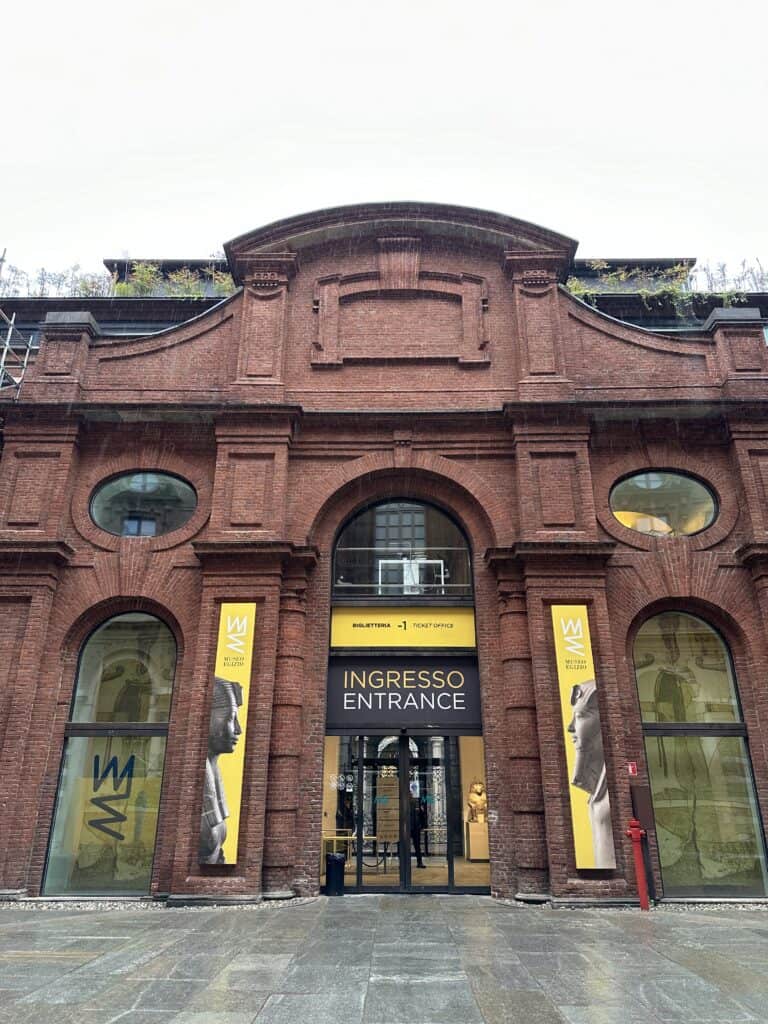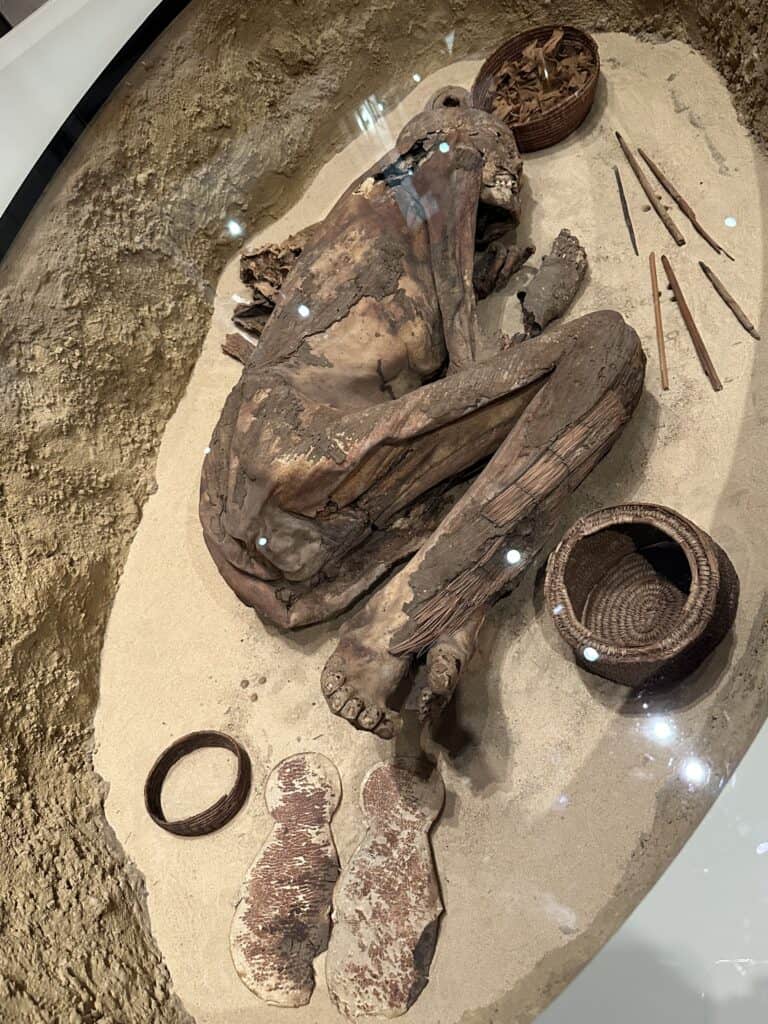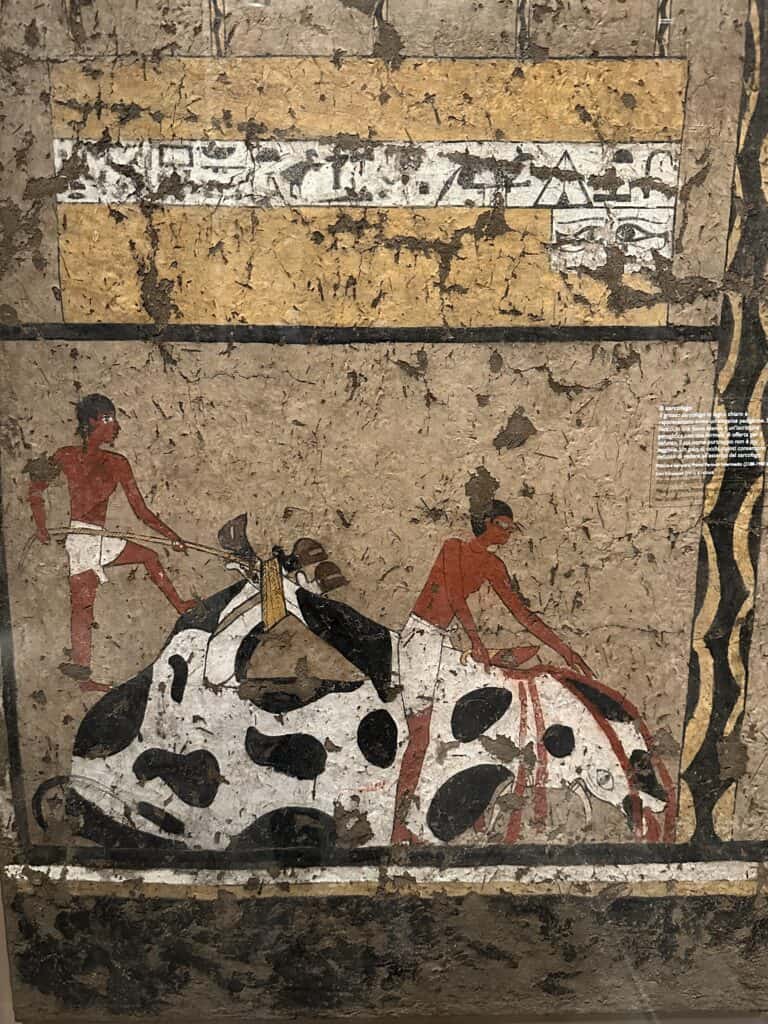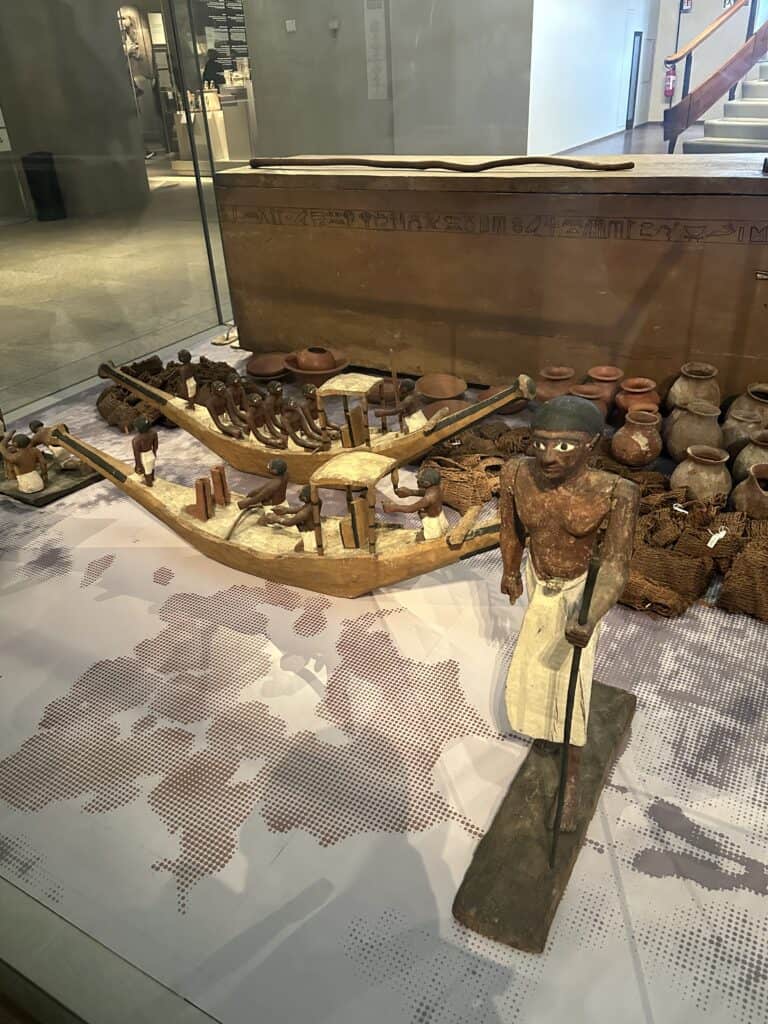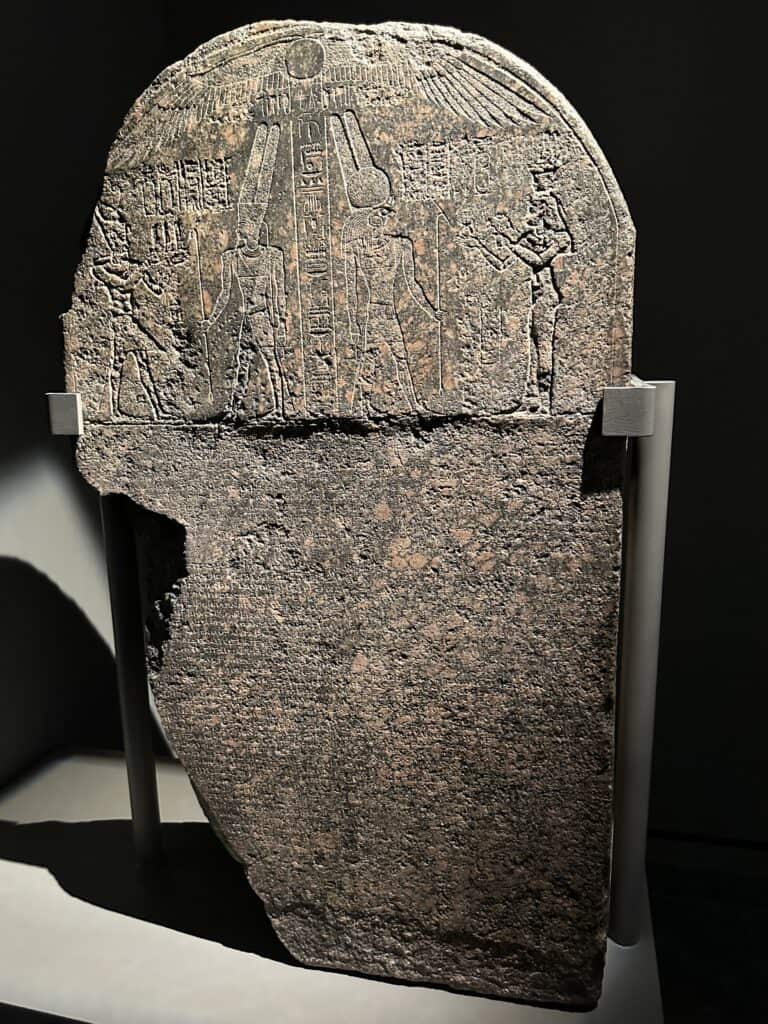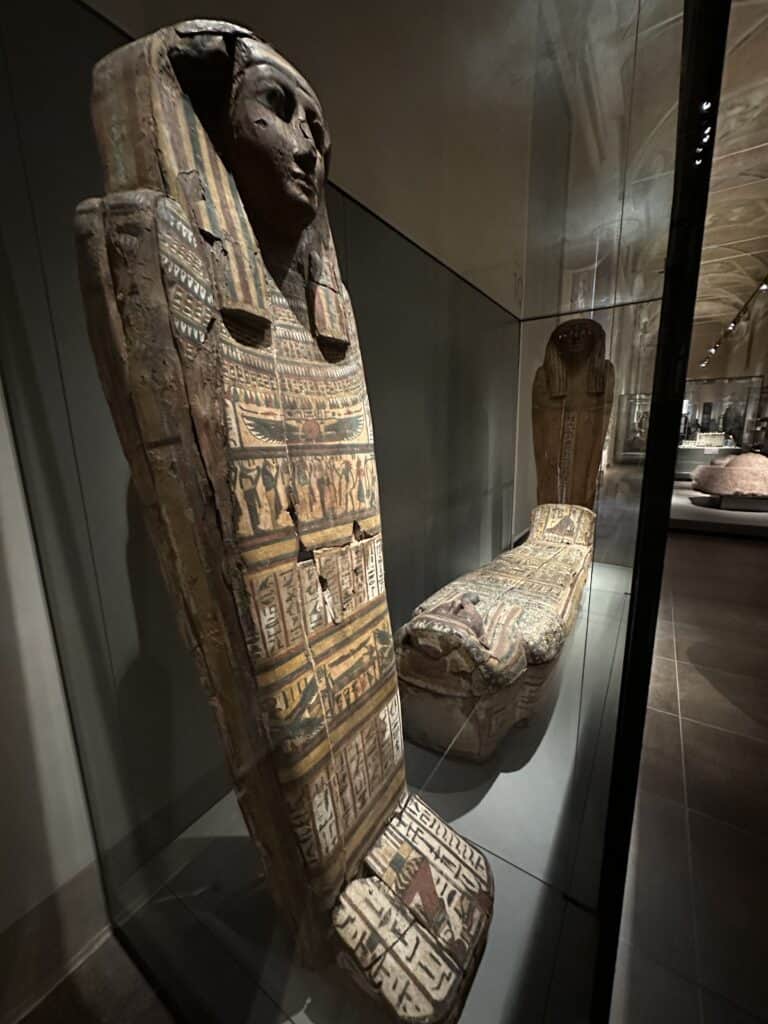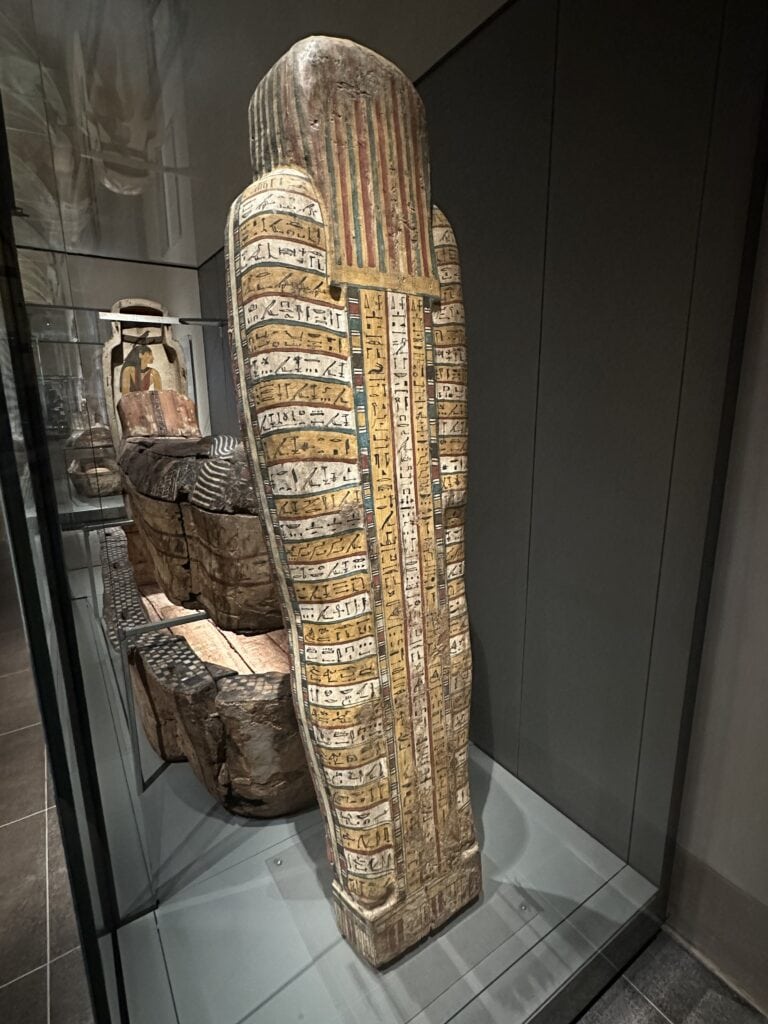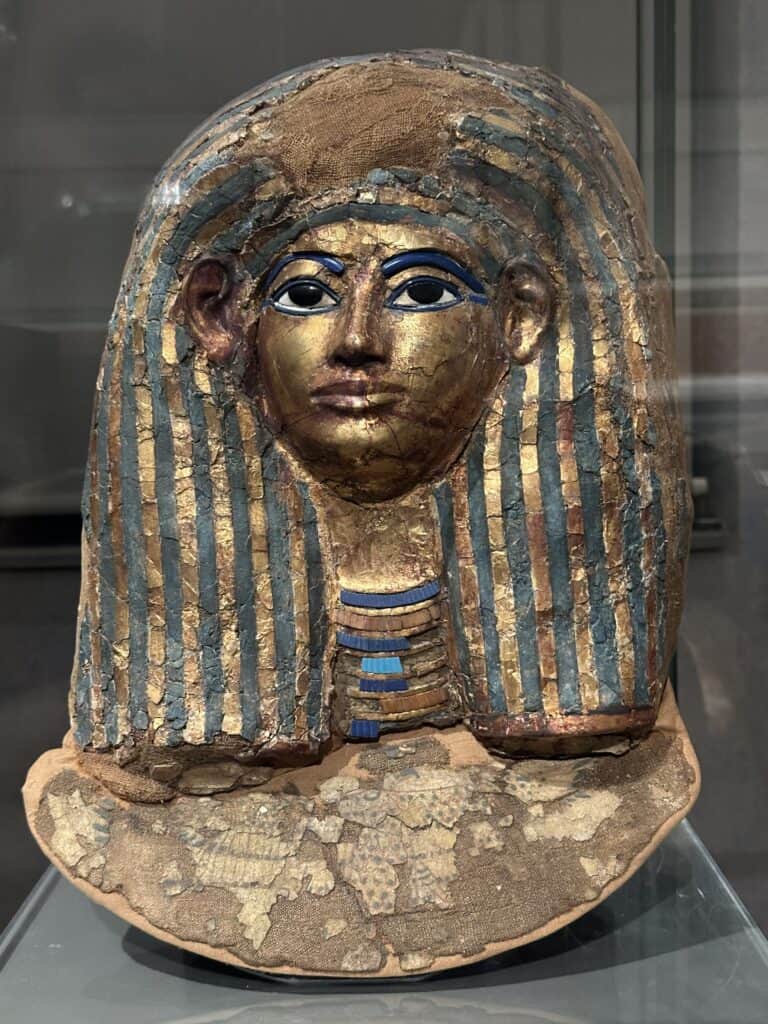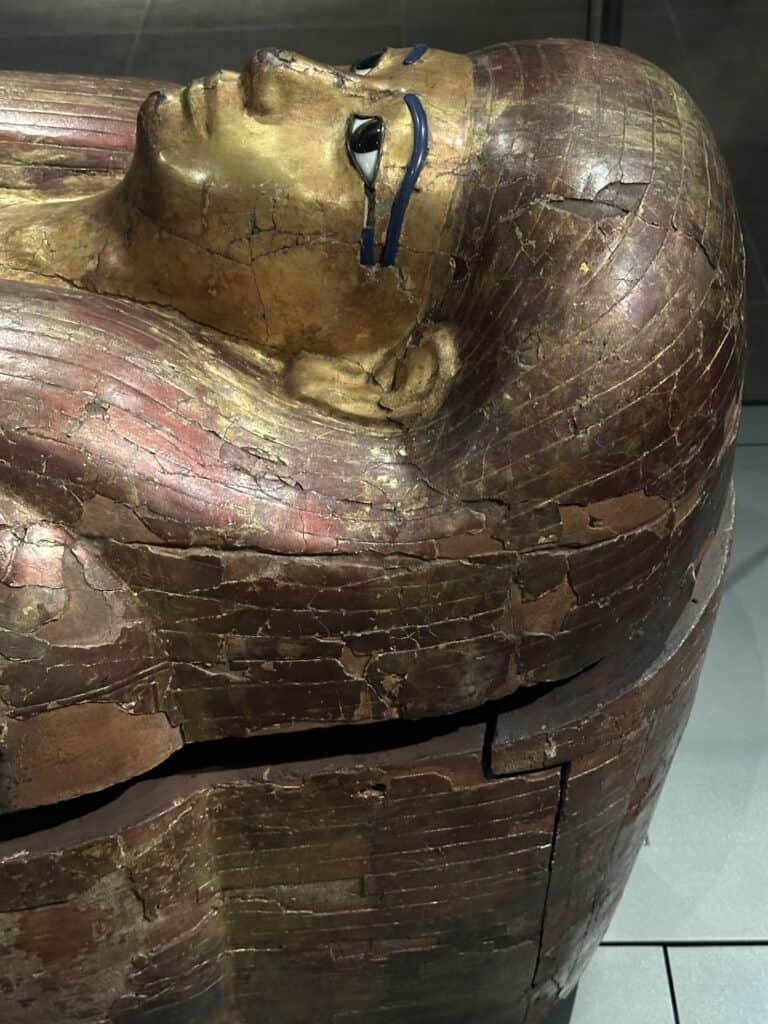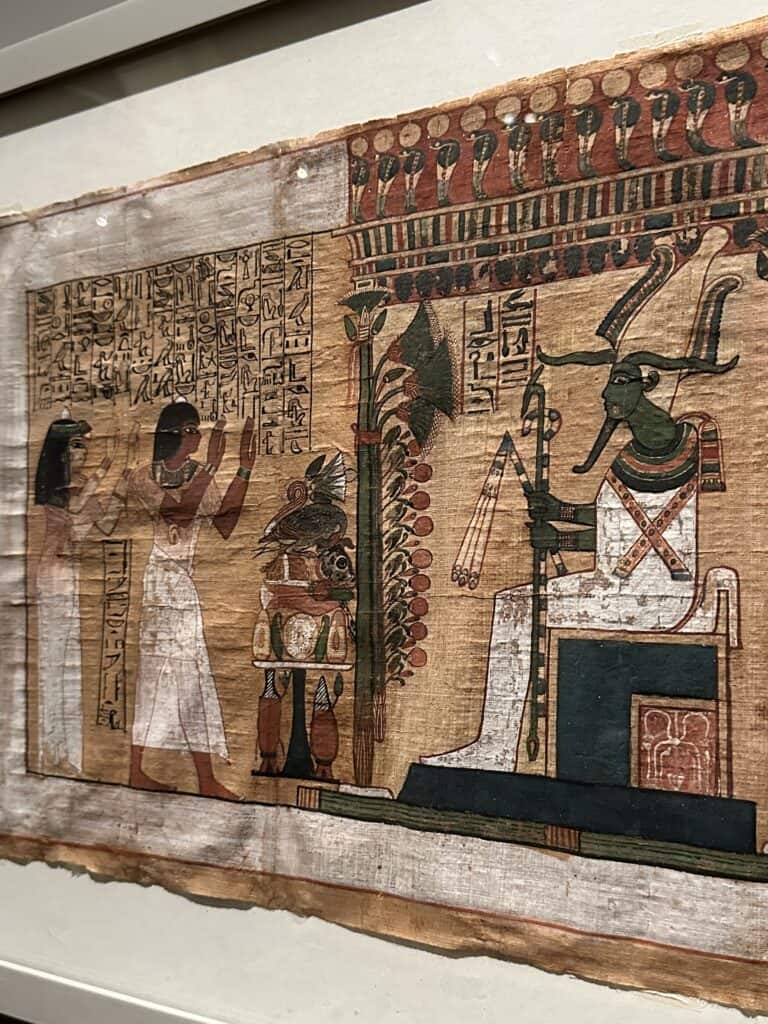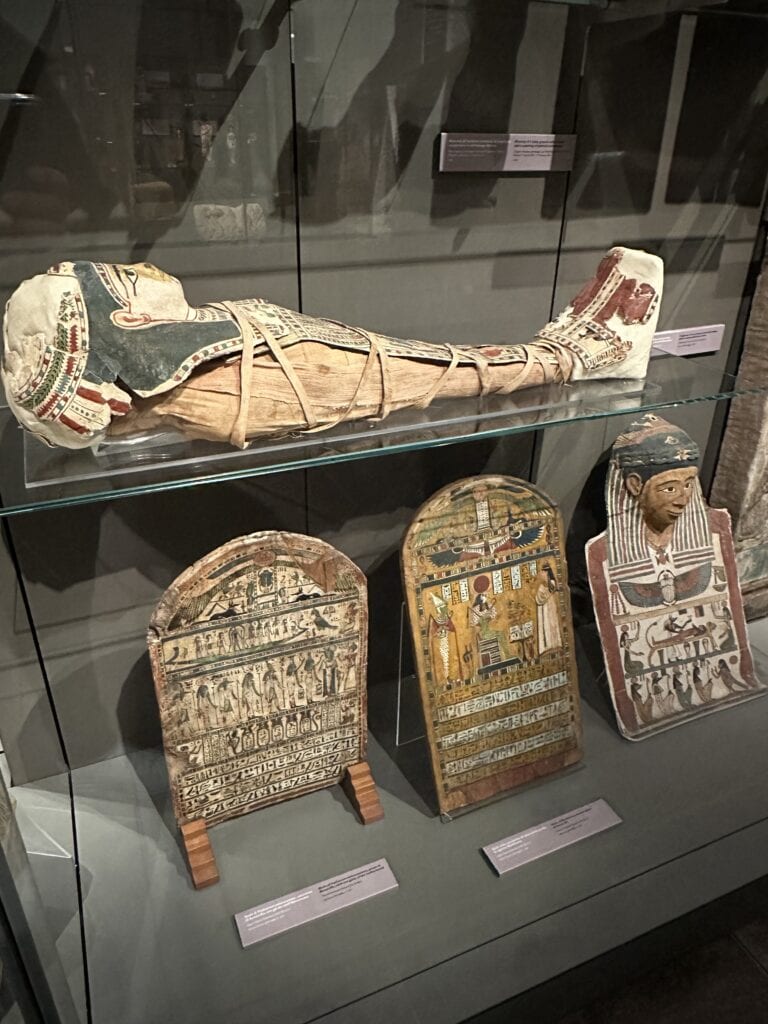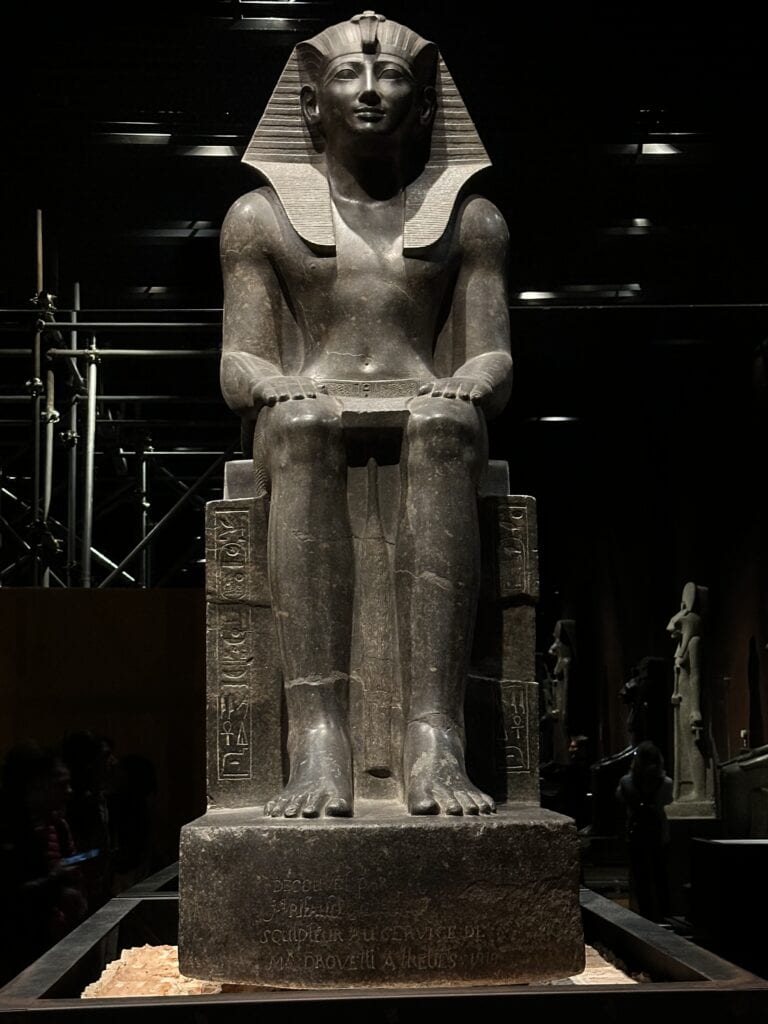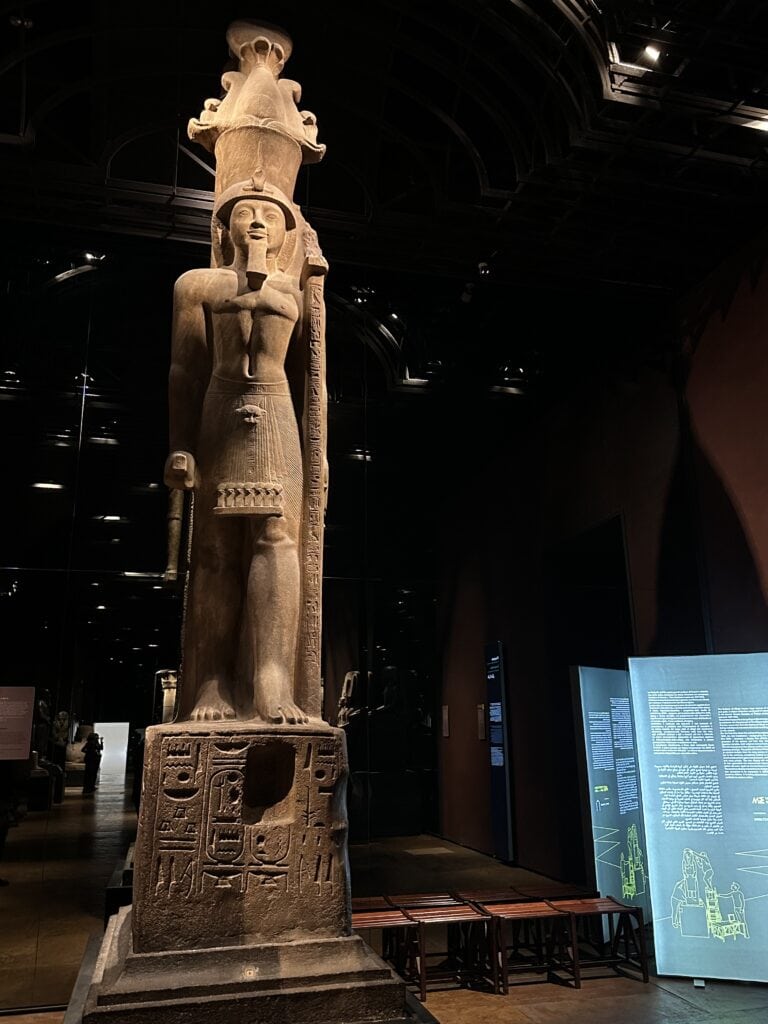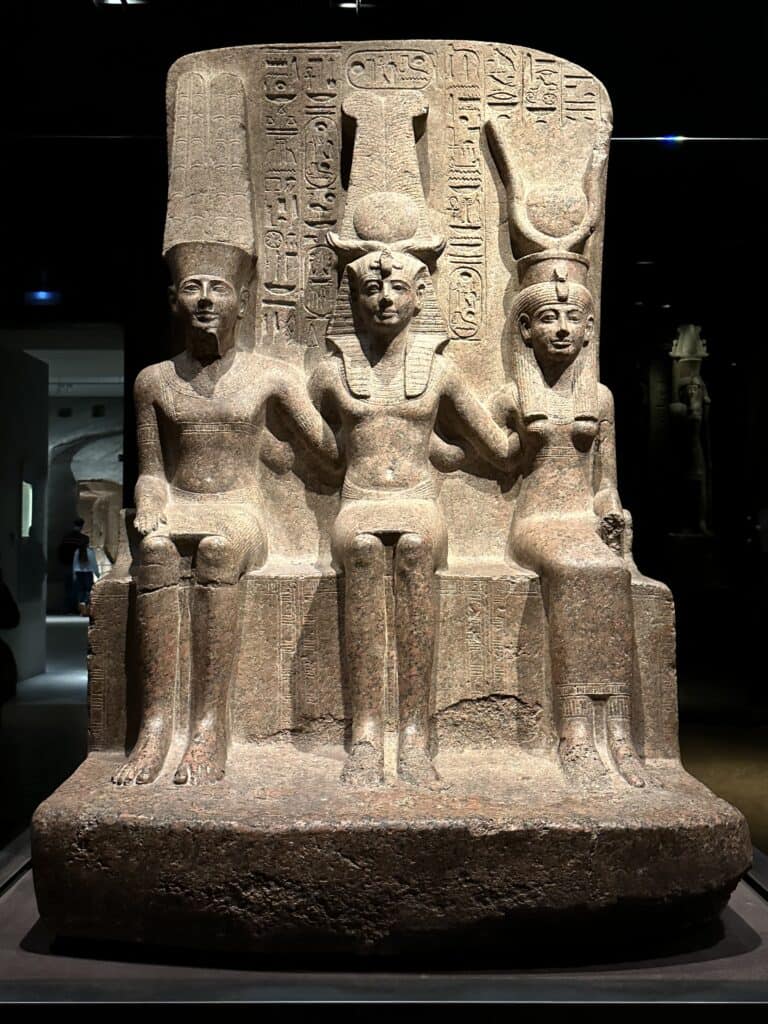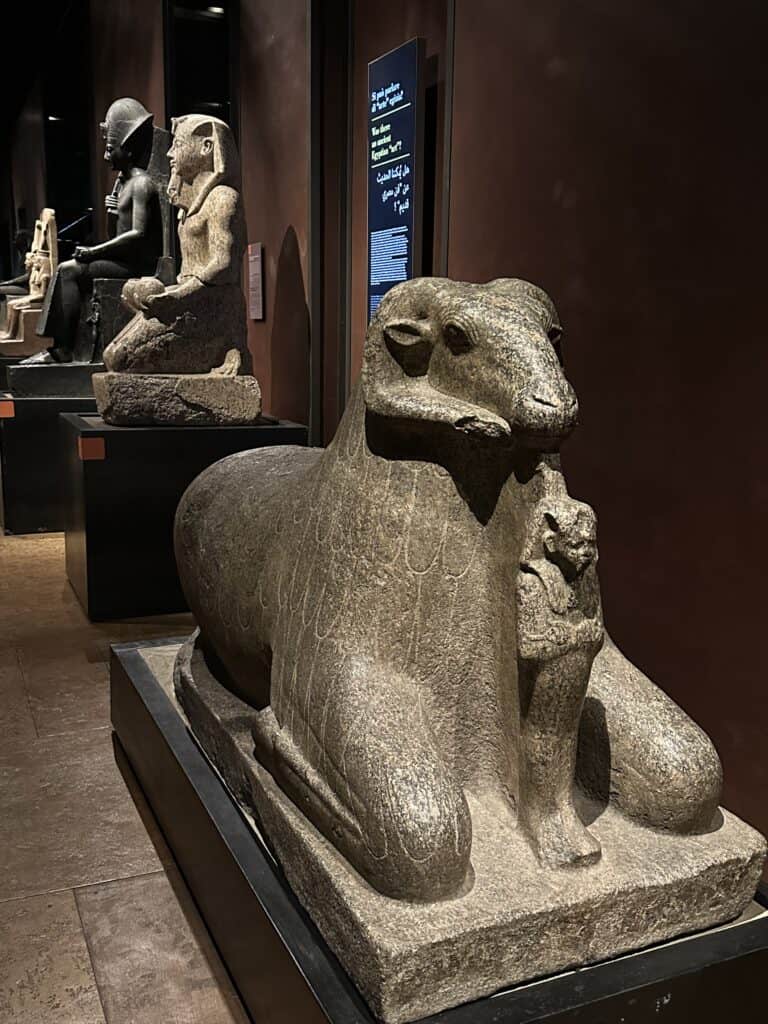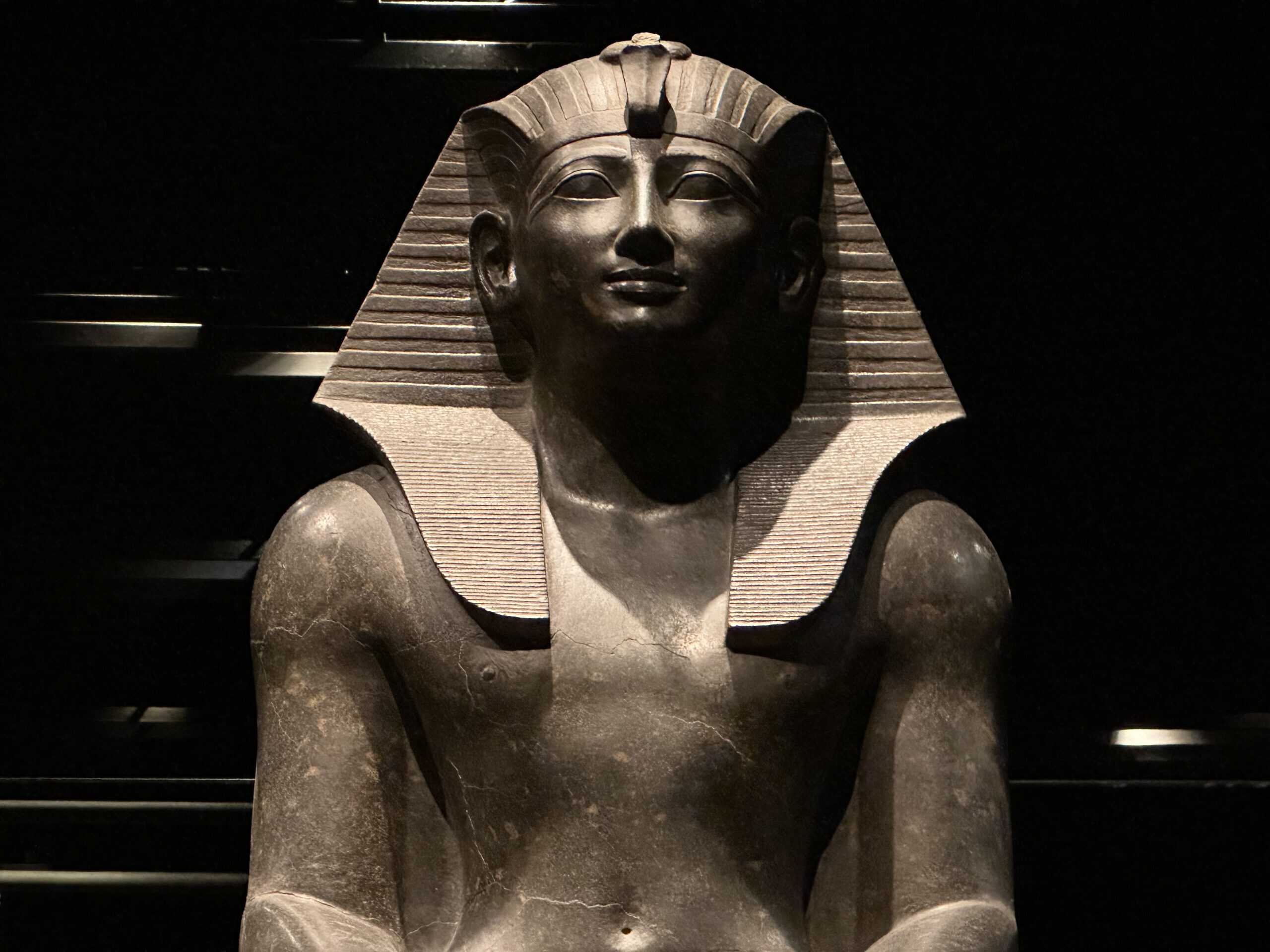
The Egyptian Museum of Turin was founded in 1824.
The opening of this museum is the work of King Charles Felix of Savoy who bought the entire collection with almost 6000 Egyptian artifacts of Bernardino Drovetti, Consul of France in Egypt.
Turin Museum is the oldest Egyptian museum in the world and is considered the most important museum of Egyptian antiquities, after the one in Cairo.
The Museum is divided into several levels:
- Basement (-1): summary of the museum’s history
- Ground floor: the Gallery of the Kings and the Nubian Hall
- First floor: Late Period, Ptolemaic Period, Roman and Late Antiquity, Tomb of Kha and the Sarcophagi Gallery
- Second Floor: Middle Kingdom and New Kingdom, Predynastic Period and Tomb of the Unknown
- Third floor: dedicated to temporary exhibitions
The most important works of the Egyptian Museum in Turin are the Predynastic Mummy, the Tomb of Kha and the Gallery of the Kings.
Predynastic Mummy
At the beginning of the exhibition, there is a body dating back to 3500 BC, therefore the Predynastic period. The mummy is in a fetal position inside an oval tank, exposed with its grave goods and found inside a pit dug in the desert.
The Tomb of Kha and Merit
Discovered in 1905 near Deir el-Medina, it is undoubtedly one of the most famous Egyptian tombs. At the time of its discovery, it returned a very rich trousseau including beds, statuettes, vases with food, and wooden sarcophagi with the mummies of Kha, chief architect of Pharaoh Amenhotep III, and his wife Merit.
The statues in the Gallery of the Kings
In this part of the museum, the most important works are the two sandstone sphinxes, probably from the period between 1292 and 1250 BC, and the statue of Ramses II, famous for being the symbol of the museum in the world. In addition to these works, there are numerous statues from Egyptian mythology.

